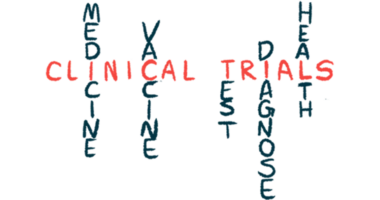Roctavian nearly zeroes out bleeds, prophylaxis need over 7 years
Most patients in trial remained off preventive therapy, data show

A single dose of Roctavian (valoctocogene roxaparvovec-rvox) nearly zeroed out the number of bleeds and the need for prophylaxis, or preventive therapy, for as long as seven years — the longest follow-up to date for any hemophilia A gene therapy clinical trial.
While most of the 12 patients remained off preventive therapy, two returned to regular prophylaxis with factor replacement therapy or Hemlibra (emicizumab-KXWH) due to spontaneous bleeding episodes and declining clotting protein levels.
These data, presented earlier this year in a scientific poster at a European congress, were detailed in the study, “Valoctocogene roxaparvovec gene therapy provides durable haemostatic control for up to 7 years for haemophilia A,” published in Haemophilia.
Hemophilia A is caused by mutations in the F8 gene, which encodes factor VIII (FVIII), a clotting protein. When FVIII is faulty or missing, the blood cannot clot properly, causing patients to experience prolonged bleeding episodes that can be difficult to control.
The one-time gene therapy Roctavian, which is approved to treat certain adults with severe hemophilia A, is designed to deliver a working version of the F8 gene in a virus-based delivery vehicle into liver cells, enabling them to produce the missing FVIII on their own. This increases FVIII levels in the bloodstream, which helps to prevent bleeding episodes.
Study goes beyond six-year data
It’s not known how long the effects from a single dose of Roctavian will last in a patient, but six-year data from a Phase 1/2 clinical study (NCT02576795) showed a sustained reduction in bleeding rates.
The latest data from the study sponsored by Biomarin Pharmaceutical, the company that developed and markets Roctavian, suggest that the effects of either a high or low dose of the gene therapy continue to hold up for as long as seven years.
The study initially included 13 men with severe hemophilia A without neutralizing antibodies against FVIII (inhibitors) or adeno-associated virus type 5 (AAV5), the delivery vehicle that carries the gene therapy into liver cells. The presence of such inhibitors may limit a patient’s response to Roctavian.
Seven patients received a dose of 6×1013 vector genomes per kilogram of body weight (vg/kg) as a single infusion into the bloodstream, and six received a lower dose of 4×1013 vg/kg. One patient in the low-dose group was lost to follow-up after 288 weeks, or 5.5 years.
Over the course of seven years, the mean annualized bleeding rate in the high-dose group was 0.8, dropping by about 96% from a baseline of 17.6 bleeds per year. The mean annualized rate for factor replacement therapy use was reduced by 95%, from 120.1 to 6.4 infusions per year.
Two patients in the high-dose group resumed regular prophylaxis with FVIII replacement therapy in year 7 due to bleeding episodes and declining FVIII levels, which likely explains the increase in infusion rates compared with year 6 (mean of 17.4 vs. 4.4 infusions per year).
One of the two patients decided to do so after having spontaneous bleeds in the internal carotid artery, a major blood vessel that supplies blood to a part of the brain, and the elbow. The other patient experienced multiple ankle bleeds, and received both FVIII replacement therapy and Hemlibra, an approved nonfactor replacement therapy.
In the low-dose group, the mean annualized bleeding rate was reduced by 88%, from 12.2 to 1.5 bleeds per year over six years of follow-up. The mean annualized rate for factor replacement therapy use was reduced by 93%, from 142.8 to 9.3 infusions per year.
One patient in the low-dose group reported having 15 bleeds in his ankle joints, all treated with on-demand FVIII replacement therapy. The bleeds were associated with chronic ankle arthropathy (joint disease), and most (80%) occurred spontaneously.
“Return to prophylaxis was presented as a treatment option by the study investigator; however, the participant chose to remain off a regular prophylactic treatment regimen,” the researchers wrote, noting that option was presented to all patients with low FVIII levels.
Over the entire study period, the most common side effects associated with Roctavian were mild to moderate, transient elevations in the levels of alanine transaminase, a liver enzyme that may indicate liver damage. In the last year, one patient in the high-dose group was found to have an enlarged liver, and one in the low-dose group had an enlarged spleen and fatty liver.
After seven years, the effects of Roctavian appear to “remain consistent with previous reports,” the researchers wrote. None of the patients developed FVIII inhibitors, and “despite the slow decline in FVIII levels,” Roctavian continued to provide bleeding control, they wrote.







